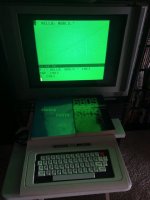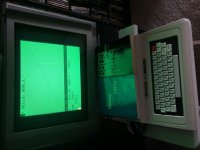smp
Veteran Member
All,
I have been working on a project to get the Talbot Microsystems Color Forth cartridge code assembled as a file that can be loaded and run by a TRS-80 Color Computer using Disk Extended Color Basic.
Today, I am announcing that I have achieved my goal. I have a version of Talbot Microsystems Color Forth that one can LOADM from disk and EXEC. I have eliminated the old cassette I/O and installed a rudimentary set of commands that allow the user to load Forth code screens from disk and save Forth code screens to disk. I also installed a command to see the files on disk, and finally, I installed a command to gracefully exit from Color Forth back to DECB.
The original cartridge code and the original manual are available on: http://www.colorcomputerarchive.com/
A .ZIP file containing two .DSK images (one for assembly code source files and the other for executable files) and two brief documentation files is available if requested. To make a request, please send me your private e-mail address in a PM.
Thanks very much for listening.
smp
I have been working on a project to get the Talbot Microsystems Color Forth cartridge code assembled as a file that can be loaded and run by a TRS-80 Color Computer using Disk Extended Color Basic.
Today, I am announcing that I have achieved my goal. I have a version of Talbot Microsystems Color Forth that one can LOADM from disk and EXEC. I have eliminated the old cassette I/O and installed a rudimentary set of commands that allow the user to load Forth code screens from disk and save Forth code screens to disk. I also installed a command to see the files on disk, and finally, I installed a command to gracefully exit from Color Forth back to DECB.
The original cartridge code and the original manual are available on: http://www.colorcomputerarchive.com/
A .ZIP file containing two .DSK images (one for assembly code source files and the other for executable files) and two brief documentation files is available if requested. To make a request, please send me your private e-mail address in a PM.
Thanks very much for listening.
smp


